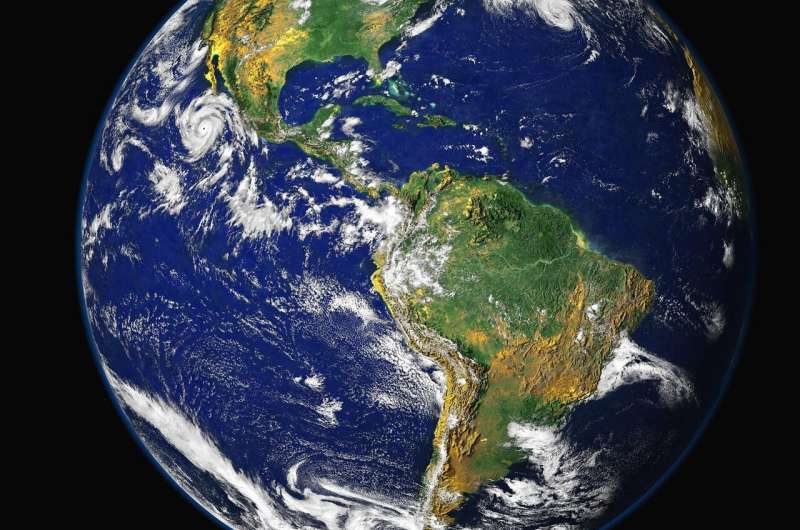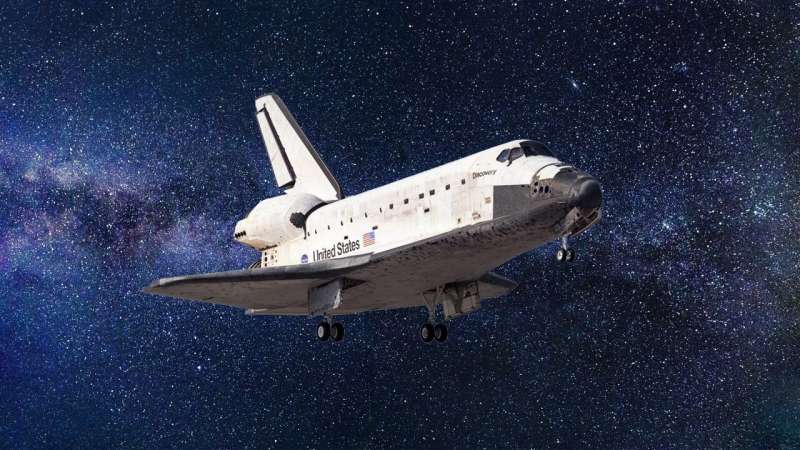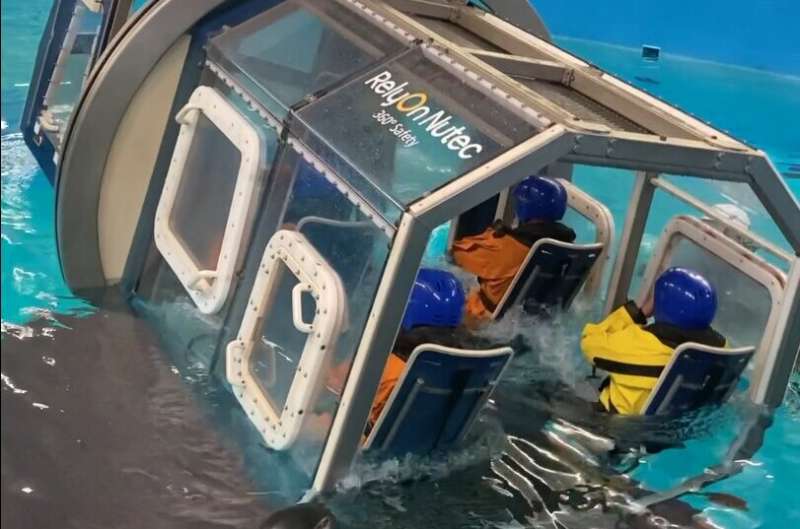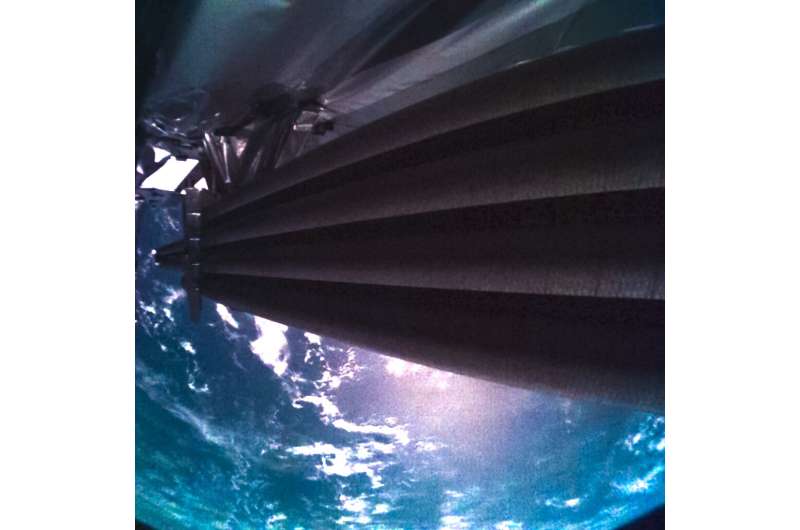Scientists work to prevent interplanetary pollution that could pose a threat to life on Earth
Friday, 07 July 2023 07:05
Formulating policies for planetary protection issues and keeping them up-to-date is the responsibility of the Committee on Space Research (COSPAR) panel on planetary protection. In an article in Frontiers in Astronomy and Space Sciences, an international group of experts affiliated with COSPAR reviewed the panel's role, and its Planetary Protection Policy, including recent considerations regarding the Policy for the Moon, Venus, Mars and small planetary bodies.
Now writing on the Frontiers news site, the panel's leadership consisting of chair Dr. Athena Coustenis and vice chairs Niklas Hedman and Prof Peter Doran explain why this endeavor is so important for future deep-space explorers.
Imagine robotic rovers taking soil samples on the surface of Mars, looking for evidence of past life and instead finding bacteria that had traveled all the way from Earth: the impact on subsequent research would be incalculable. Or picture a probe digging through the crust of an icy moon such as Europa or Enceladus, and injecting organic contamination from Earth into the subsurface ocean, thus compromising any further search for life in that body.
At the same time, if extant or extinct life were to exist on such bodies, returning samples to our planet without proper measures to prevent hazards to our biosphere could lead to important risks for humanity.
Earth from Space: Cyclone Mocha
Friday, 07 July 2023 07:00 Image:
The Copernicus Sentinel-3 mission captured this image of the powerful Cyclone Mocha on 13 May 2023 as it made its way across the Bay of Bengal heading northeast towards Bangladesh and Myanmar.
Image:
The Copernicus Sentinel-3 mission captured this image of the powerful Cyclone Mocha on 13 May 2023 as it made its way across the Bay of Bengal heading northeast towards Bangladesh and Myanmar. Europe leans on SpaceX to bridge launcher gap
Thursday, 06 July 2023 21:29
Europe, temporarily lacking its own access to space, plans to rely more on SpaceX to launch key science and navigation spacecraft while working to restore its launch capabilities.
Viasat signs deal to commercialize European airspace tracking service
Thursday, 06 July 2023 19:59
A group founded by European air traffic controllers has signed a deal to bring improved airspace-tracking capabilities from Viasat’s constellation to market next year.
California Science Center to start complex process to display space shuttle Endeavour vertically
Thursday, 06 July 2023 19:57
The lengthy process of putting the retired space shuttle Endeavour on display in the vertical launch position will begin this month in Los Angeles.
The California Science Center announced Thursday that the six-month process will get underway July 20 at the future Samuel Oschin Air and Space Center currently under construction in Exposition Park.
The initial step, dubbed "Go for Stack," will be installation of the bottom portion of the solid rocket boosters known as aft skirts upon which will be stacked the booster segments, the external tank and then Endeavour.
The 20-story tall display will show the shuttle as it would appear waiting on a launch pad.
Endeavour was built as a replacement for the destroyed shuttle Challenger and flew 25 missions between 1992 and 2011.
When NASA's shuttles were retired, Endeavour was flown to California atop NASA's special Boeing 747 shuttle carrier in 2012, drawing crowds as it flew over locations in the state associated with the space program.
After landing at Los Angeles International Airport, the shuttle was placed on a special trailer and then created a sensation as it was inched through tight city streets to the California Science Center over several days.
Space Command argues for shift from static to dynamic satellite operations
Thursday, 06 July 2023 19:00
In order to better keep tabs on adversaries, the U.S.
Helicopter underwater escape training for ESA's astronaut support team
Thursday, 06 July 2023 18:23
Solving the RIME deployment mystery on ESA's Juice mission
Thursday, 06 July 2023 18:21
When the RIME antenna on ESA's Juice mission failed to deploy a few days after launch, the engineering teams faced the mighty challenge of understanding the fault and rectifying it. At stake was a chance to see inside Jupiter's mysterious icy moons.
The stakes were already high before the spacecraft ever left the ground. ESA's Jupiter Icy Moons Explorer (Juice) was designed by Airbus to conduct an unprecedented investigation of the Jupiter system and its family of icy moons.
A key to that investigation is the Radar for Icy Moon Exploration (RIME) antenna, which is part of Juice's comprehensive suite of ten science instruments. Once in the Jupiter system, RIME will be used to remotely probe the subsurface of Jupiter's icy moons. Its radar signals will penetrate the moons to a depth of 9 km, and reveal details of between 50 and 140 m across. This will give insight into their geology and provide unique data to understand the habitability of these remote, icy moons.
Astronomers witness energetic switch on of black hole
Thursday, 06 July 2023 11:40 A team of astronomers led by researchers from the University of Birmingham, University College London and Queen's University Belfast have discovered one of the most dramatic 'switches on' of a black hole ever seen. They will present their findings, Tuesday 4 July, at the 2023 National Astronomy Meeting in Cardiff. The work will also be published in Monthly Notices of the Royal Astronomical Socie
A team of astronomers led by researchers from the University of Birmingham, University College London and Queen's University Belfast have discovered one of the most dramatic 'switches on' of a black hole ever seen. They will present their findings, Tuesday 4 July, at the 2023 National Astronomy Meeting in Cardiff. The work will also be published in Monthly Notices of the Royal Astronomical Socie Researchers propose new method to measure cosmic expansion
Thursday, 06 July 2023 11:40 In 1929, astronomers discovered that galaxies are streaming away from us and each other. They interpreted this observation that the universe is expanding. However, when they measured how fast it is expanding, they got different answers using different methods. The difference continues to be a thorn in their description of the expanding universe.
A team of researchers led by Souvik Jana at
In 1929, astronomers discovered that galaxies are streaming away from us and each other. They interpreted this observation that the universe is expanding. However, when they measured how fast it is expanding, they got different answers using different methods. The difference continues to be a thorn in their description of the expanding universe.
A team of researchers led by Souvik Jana at Secrets of pearl harnessed for stronger space structures
Thursday, 06 July 2023 10:25
Pearls and seashells are made from the same basic stuff as easily crushed chalk – humble calcium carbonate – so why are they so much tougher? Researchers are taking design tips from the micro-structure of these naturally formed materials to produce stronger, more fracture-resistant ceramics for future space missions.
A space rocket hotter than the Sun
Thursday, 06 July 2023 09:32 UK aerospace company Pulsar Fusion has started constructing the largest practical nuclear fusion rocket engine ever built.
The 8-metre fusion chamber is being assembled in Bletchley, England and when fired in 2027, will temporarily become the hottest place in the solar system creating exhaust speeds of over 500,000 MPH.
Researchers at Pulsar Fusion hope to reach several hundred- mill
UK aerospace company Pulsar Fusion has started constructing the largest practical nuclear fusion rocket engine ever built.
The 8-metre fusion chamber is being assembled in Bletchley, England and when fired in 2027, will temporarily become the hottest place in the solar system creating exhaust speeds of over 500,000 MPH.
Researchers at Pulsar Fusion hope to reach several hundred- mill Final Ariane 5 blasts off amid Europe rocket crisis
Thursday, 06 July 2023 09:32 Europe's workhorse Ariane 5 rocket blasted off for a final time on Wednesday, with its farewell flight after 27 years of launches coming at a difficult time for European space efforts.
Faced with soaring global competition, the continent has unexpectedly found itself without a way to independently launch heavy missions into space due to delays to the next-generation Ariane 6 and Russia withd
Europe's workhorse Ariane 5 rocket blasted off for a final time on Wednesday, with its farewell flight after 27 years of launches coming at a difficult time for European space efforts.
Faced with soaring global competition, the continent has unexpectedly found itself without a way to independently launch heavy missions into space due to delays to the next-generation Ariane 6 and Russia withd A bumpy road ahead for Curiosity: Sols 3876-3879
Thursday, 06 July 2023 09:32 Our latest assessment period over sols 3872 and 3873 was a "touch and go" plan: some contact science and other observations, followed by a drive. We performed some imaging and DRT (Dust Removal Tool) brushing on the "Madero" bedrock target, to allow for contact science using APXS.
For some of our Mastcam imaging, we also move the arm out of the way as to reduce shadow in our images. Our pl
Our latest assessment period over sols 3872 and 3873 was a "touch and go" plan: some contact science and other observations, followed by a drive. We performed some imaging and DRT (Dust Removal Tool) brushing on the "Madero" bedrock target, to allow for contact science using APXS.
For some of our Mastcam imaging, we also move the arm out of the way as to reduce shadow in our images. Our pl 

